
The associations between Greek and Roman gods are very well known, from Zeus and Jupiter to Aphrodite and Venus. However, the Graeco-Roman pantheon of gods was not simply a system of direct equivalents. There is an underlying complexity behind the apparent similarities which lies, for the most part, in the early origins of the Roman deities.
Italian contact with Greek civilization greatly increased in the 6th century BC when the Greeks established a series of colonies in Italy. This brought with it the powerful influences of Greek religion and its deities. One of the most powerful of these was between Athena, Greek goddess of war, and Minerva, Roman goddess of wisdom and war. While these two shared similarities, they were also tailored to represent their respective cultures. Read more to find out how they were like and unlike one another.
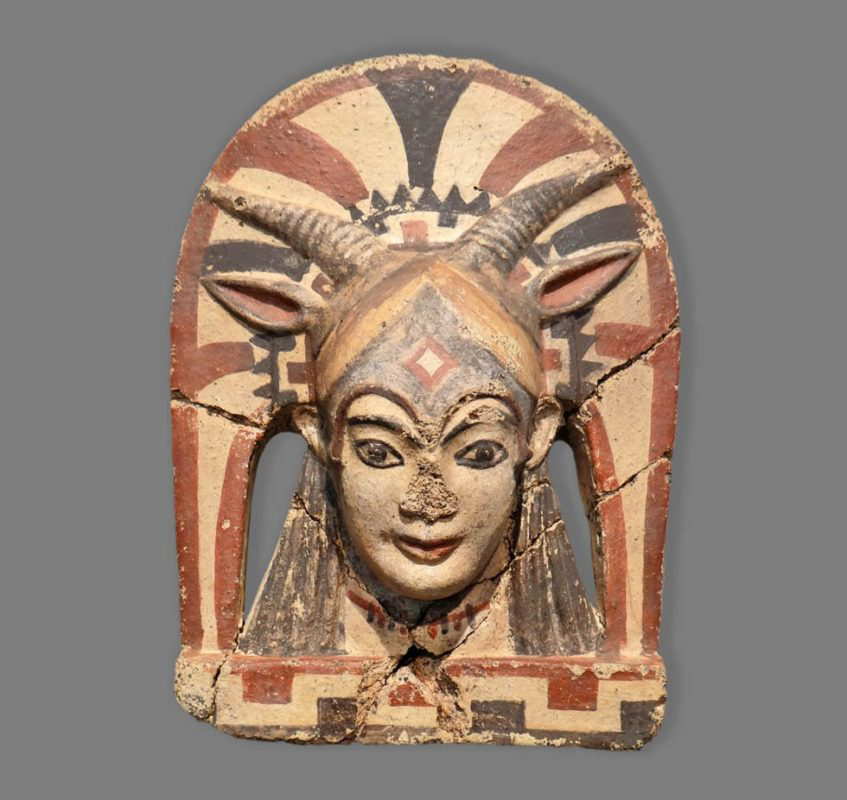
Athena, Greek Goddess of War
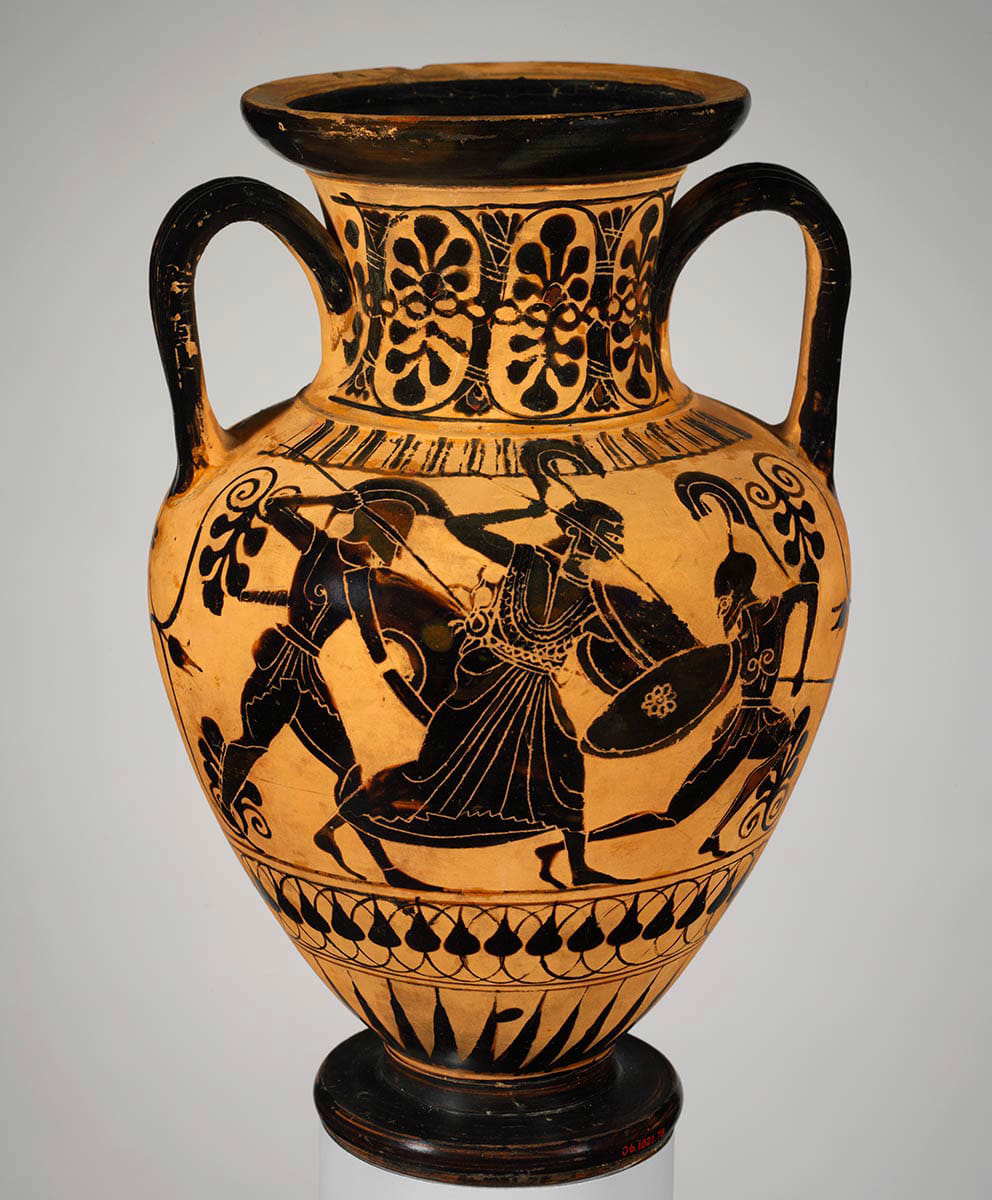
One of the most famous ancient literary depictions of the Greek goddess Athena can be found in The Iliad by Homer. Her recurring image is that of a Greek goddess awaiting battle, dressed in full armor but also in a beautiful embroidered robe. This image demonstrates Athena’s fascinating paradox. She is simultaneously the Greek goddess of feminine skills in handcraft and masculine skills in war.
Athena’s specific martial skill was her tactical awareness in battle, which she used to help her chosen heroes. This intelligence highlights her other important sphere of influence; she was the Greek goddess of wisdom. This association with wisdom and knowledge was acquired at birth. Athena was miraculously born from the head of Zeus after he swallowed her mother, Metis. In Greek, metis means ‘cunning intelligence’ and Athena is its progeny.
Get the latest articles delivered to your inbox
Sign up to our Free Weekly Newsletter
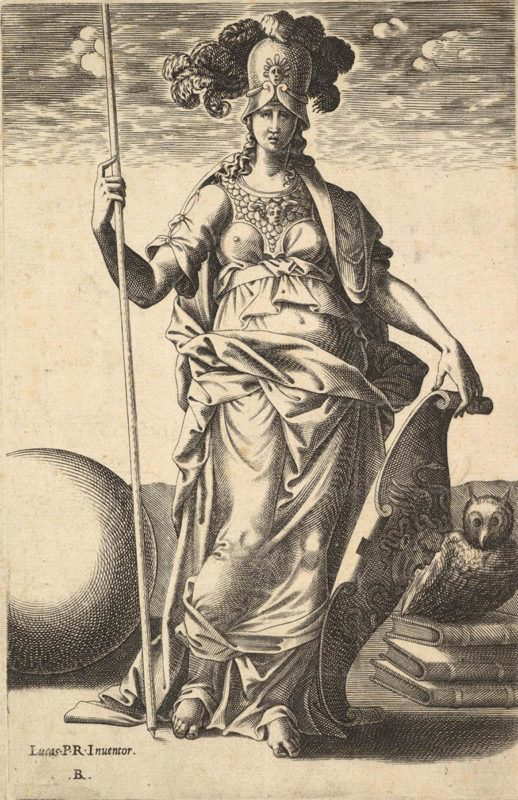
The image of the Greek goddess Athena in full armor is often referred to as Athena Promachos, meaning ‘Athena who fights at the front’. There was a famous bronze statue of Athena Promachos created by the 5th-century-BC sculptor Pheidias. The colossal statue once stood on the Acropolis of Athens between the Propylaea and the Parthenon but sadly it no longer exists.
Athena Promachos normally wears a bronze helmet, tipped back on her head. In her hand, she holds a spear. The owl, a symbol of wisdom, is often present by her side. Perhaps the most important piece of her armor is the mysterious aegis. The aegis was either a bronze breastplate or shield bearing the image of the Gorgon Medusa, whose head was given to Athena by the hero Perseus. A version of the aegis was later worn in battle by Alexander the Great and many Roman Emperors.
Athena, Greek Goddess of Victory in War
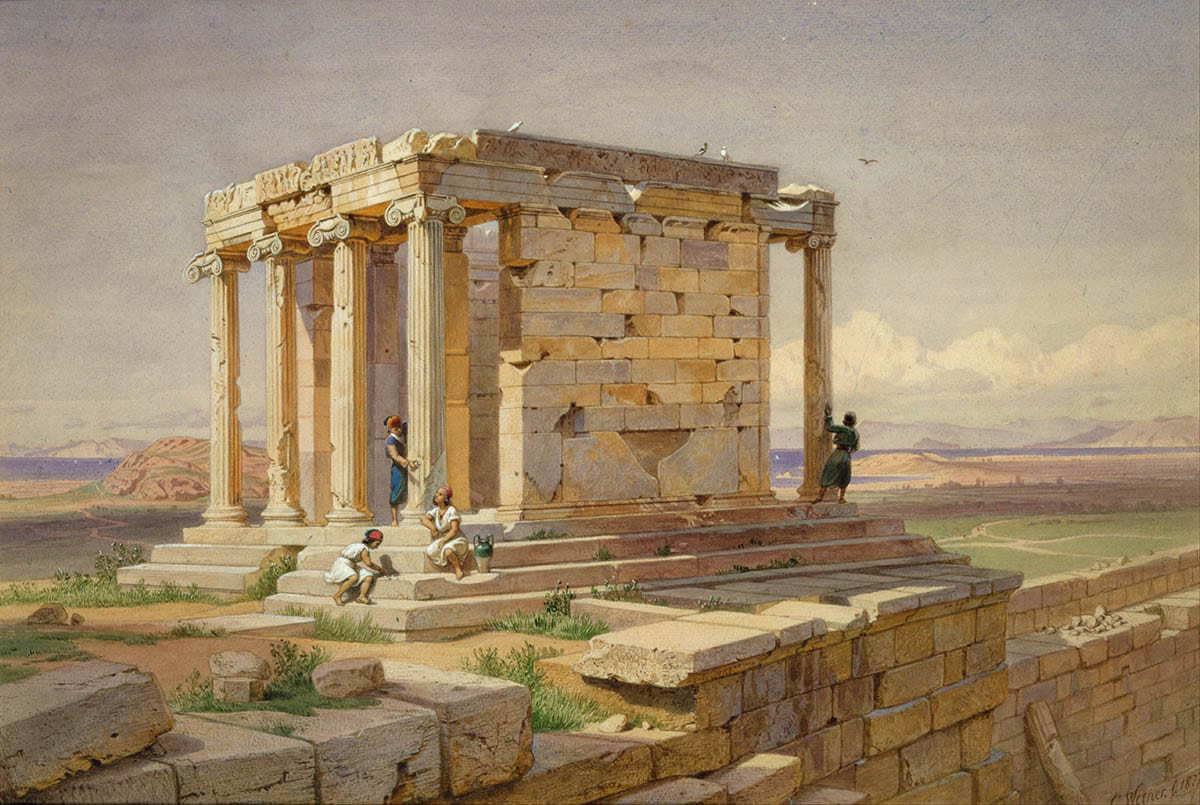
Another common manifestation of the warlike Athena is Athena Nike. Athena Nike was the goddess of victory, primarily victory in war. The goddess was often depicted with wings, allowing her to swoop down to victory when the moment arose. Nike later became detached from Athena’s identity and was worshiped as a separate goddess.
A beautiful Ionic temple to Athena Nike was built on the south-west side of the Acropolis at Athens in around 420 BC. It is believed that the temple was home to a wooden cult-statue of the goddess. In one hand she held a helmet and in the other a branch of the pomegranate tree. Respectively, these were the symbols of war and peace. The citizens of Athens were dedicated to the worship of Athena Nike during long periods of war. This was particularly true during the Peloponnesian War with Sparta, which lasted from 431-404 BC.
Athena, Protector Of Cities

The worship of Athena Nike by the citizens of Athens demonstrates another aspect of Athena’s sphere of influence. She was believed to be a great protector of cities, particularly in times of war and crisis. The city she was most closely connected to was Athens. No other Olympian deity had such a large and powerful city named after them.
In the 5th century BC, as a result of Pericles’ building program, the Acropolis became the most important part of the city. Great temples and marble structures were erected by famous architects and sculptors. It was Athena who presided over this revered site as Athena Polias – the goddess of the Acropolis. Girls served Athena and her priestess on the Acropolis at the Arrhephoria Festival, as part of an initiation process. These girls, the arrhephorai, also set up the loom which was to weave Athena’s robe for the Great Panathenaea.
Athena And The Panathenaic Festival
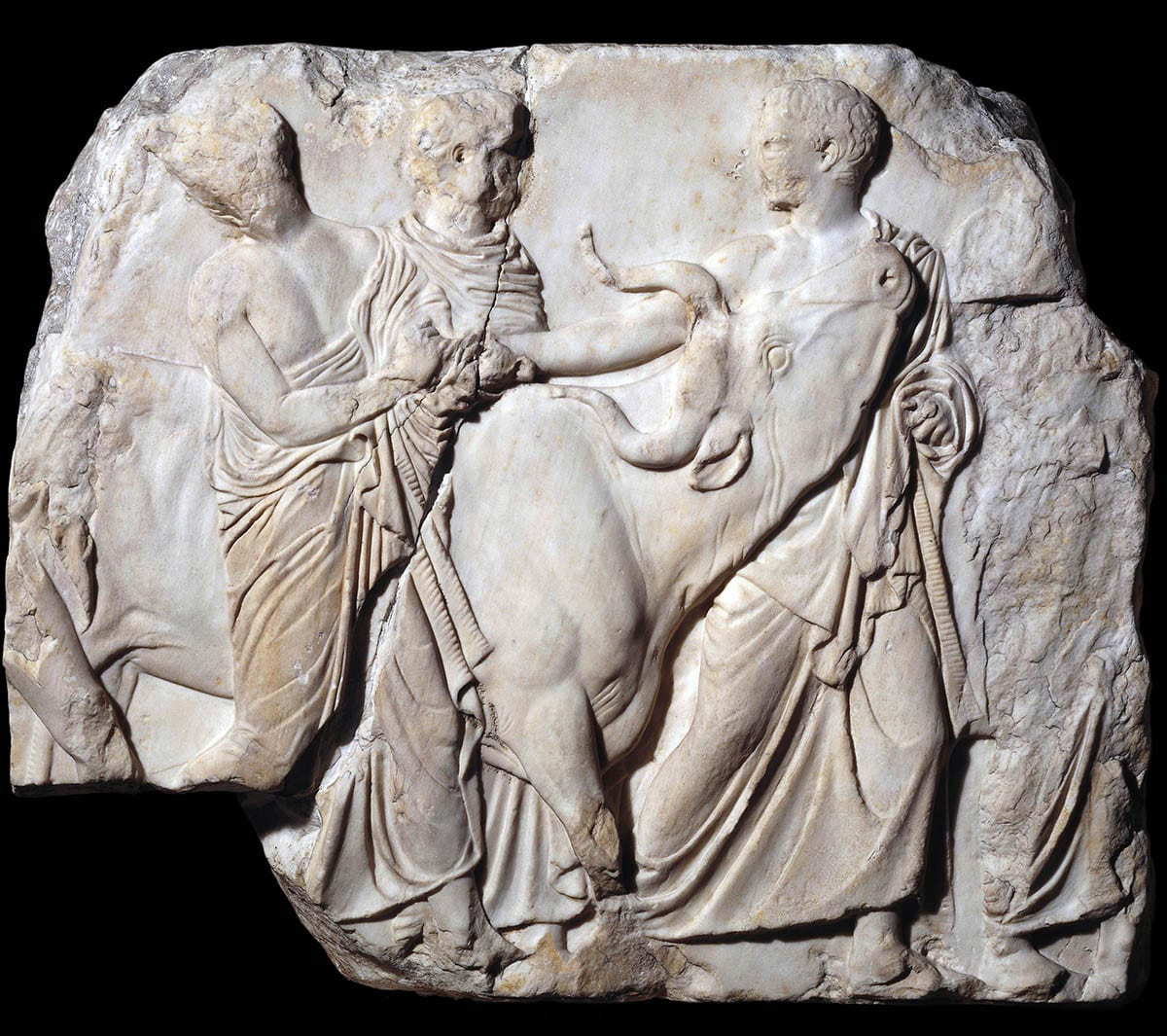
The Panathenaea was a festival that celebrated Athena and her greatest moment in battle. The festival was held every year on Athena’s birthday, around the 15th of July. But every four years an even larger festival took place, The Great Panathenaea. This involved athletic, poetic, and naval contests as well as religious sacrifices. Each year at the festival, a beautiful robe was presented to the cult-statue of Athena Polias on the Acropolis.
This robe, known as the peplos, measured around 2 by 1.5 meters in size and took over nine months to create. The cloth was yellow and purple, and scenes of Athena’s greatest victory in battle were woven into it. During the war between the Giants and the Olympians, Athena had displayed her most fearsome skills in warfare. Second only to Zeus at the head of the battle, she successfully defeated the Giants, enabling the Olympians to reign supreme.
Menrva, Etruscan Goddess of War

Minerva was not simply the Roman equivalent of the Greek goddess, Athena. She was an ancient goddess whose origins lay in the indigenous Etruscan heritage of Italy. The daughter of Tin and Uni, the king and queen of the Etruscan gods, Minerva’s original name was Menrva. The prefix Men- is thought to relate to other Indo-European words linked with thought, such as mens, the Latin for ‘the mind’. Here we can see an early association between Minerva and intelligence, linking her with Athena.
However, it is believed that Menrva was both a war and weather goddess, and she is often depicted as hurling a thunderbolt. This is a clear difference from Athena, who was never associated with the weather. Greek influences on Italian craftsmen in the 6th century BC saw the image of warlike Menrva gradually being associated with Athena. The Roman state religion later adopted her as Minerva goddess of wisdom and war.
Roman Minerva

There is no evidence of Minerva in Rome before her important inclusion in the Capitoline Triad. This was a divine grouping made up of Jupiter, Juno, and Minerva and again was inherited from the Etruscans. These three deities were believed to occupy the Capitoline Temple as the protectors of Rome.
Like Athena on the Acropolis, Minerva was worshiped on the Capitoline particularly in times of war. The Temple itself was dedicated to the Triad during the first year of the Republic, 509 BC. It became a symbol of Rome’s new-found freedom from monarchical rule. Smaller versions of the temple were also built in provinces as far afield as Africa after successful invasion campaigns. Victorious generals, who were awarded triumphal processions through Rome, would head towards the Capitoline Temple. Here they would sacrifice to Minerva, Juno, and Jupiter in thanks for their success in battle.
Minerva Goddess of War
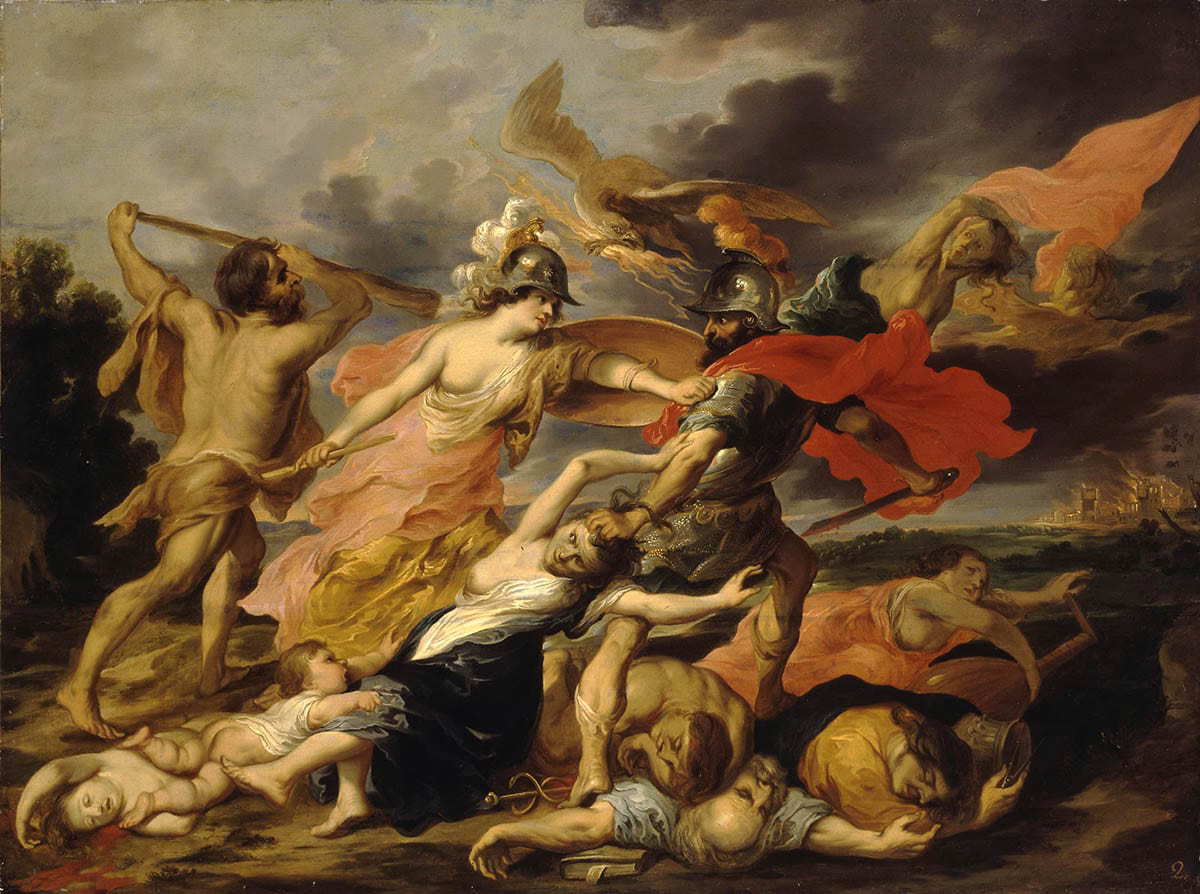
The worship of Minerva goddess of war became very popular in the Republican Era. Pliny the Elder tells us that Pompey, a preeminent politician, and army general, built a temple to Minerva in Rome around 60 BC. When he returned from a successful military campaign in the East of the empire, he dedicated all his plunder to the goddess as a votive offering.
Many historians believe that Minerva began to eclipse Mars as a deity of war by the time of the late Republic. The Quinquatrus Festival, held each year on March 19th, signaled the beginning of the campaign season for the army. In early Roman history this festival was only associated with Mars, but it was later entirely dedicated to Minerva. The festival also evolved to include literary competitions to reflect Minerva’s association with the arts. An association which she inherited from her links with Athena.
Minerva Victrix

One of Minerva’s most important epithets was Minerva Victrix, meaning Minerva goddess of Victory. This version of Minerva has clear links with the Greek goddess Athena Nike since both were primarily associated with victory in battle. Unlike Athena Nike, Minerva Victrix is hardly ever depicted in art with wings. However, there is one important exception.
In 1910, a beautiful statue of a winged goddess was discovered among the ruins of the ancient town of Ostia. Even though a winged Minerva goddess was uncommon, winged deities are often found in Etruscan art. This led archaeologists to surmise that the statue was of the Minerva goddess of war, with hints to her Etruscan origins.
References to Minerva Victrix are rarely found in Roman art and literature. However, her cult became very popular in the 2nd century AD under the reign of Domitian.
Minerva and Emperor Domitian

One of Minerva’s closest associations was with the less-than-illustrious Emperor Domitian, who ruled Rome AD 81–96. Domitian believed that Minerva was his special divine benefactress and he greatly admired her tactical prowess in battle. In AD 82, he even named a legion after her, Legio I Minervia. This legion fought with an image of Minerva as their emblem and became a primary force in wars against Germanic tribes.
The poet Statius writes of a vast equestrian statue of Domitian holding a statuette of Minerva in his left hand. The statue apparently once took pride of place in the Roman Forum, but it does not survive today. Domitian was a cruel and bloodthirsty ruler, who regularly had his political opponents murdered. After his death, the Senate ruled that the memory of his reign should be erased. In a process known as damnatio memoriae, many images of him were destroyed.

The Roman biographer Suetonius tells of an ominous dream which Domitian experienced shortly before his death. In this dream, Minerva apparently visited the emperor and told him that he would no longer have her protection. Divinities who withdrew their support in a dream were believed to be a very bad omen. Sure enough, a few days later on 18th September AD 96, Domitian was assassinated in a plot involving his own court officials.

The goddesses of war, Greek Athena and Roman Minerva, therefore have much in common. This is, of course, to be expected from the deities of two such closely linked ancient civilizations. The Roman and Greek goddesses were noted for their skills in warfare and their sharp intelligence. They were also both great protectors of their respective cities, Athens and Rome, particularly in times of war. But it is also important to acknowledge Minerva’s mysterious Etruscan origins. This heritage gives her a distinctive identity and prevents her from being viewed as merely a later derivative of Athena.








